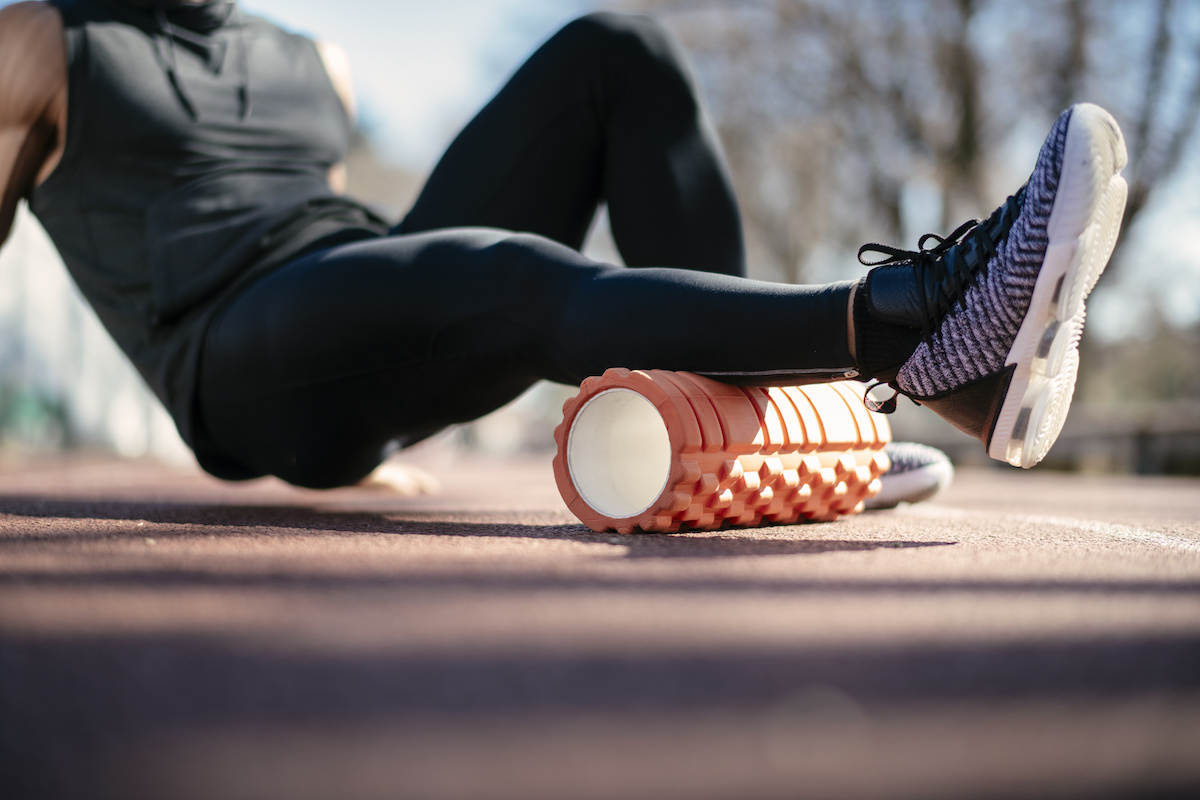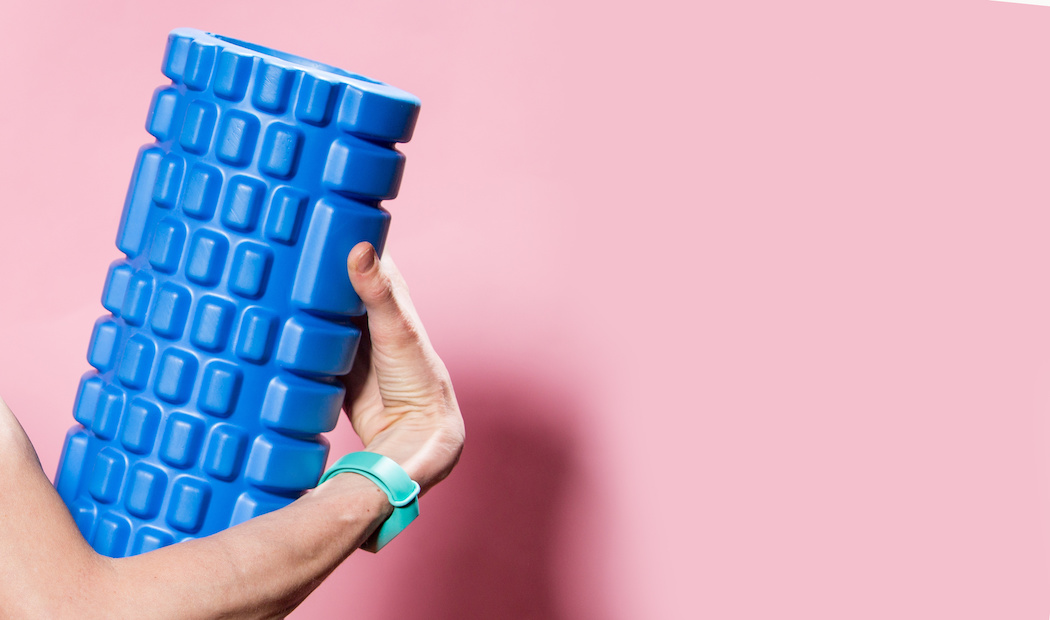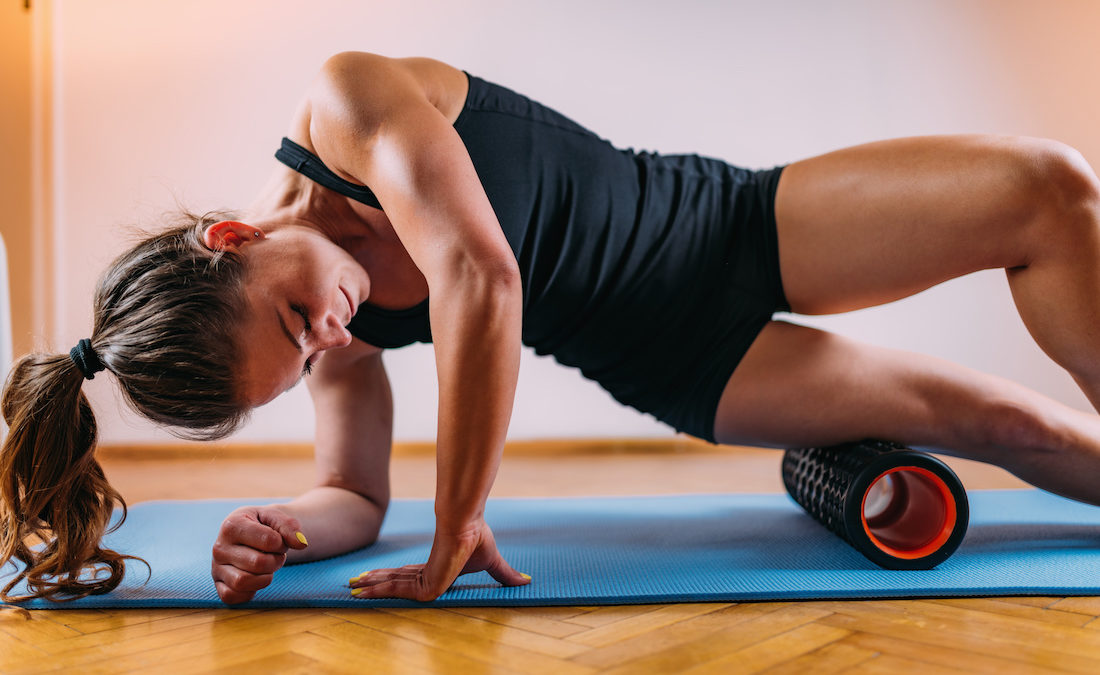Here’s How a Simple Foam Roller Can Take Your Workouts to the Next Level

So, you’ve done the hard work. You’ve gotten out of bed. Been for a run. Planked like your life depending on it. Put your upper body through a fierce resistance band workout. Now, are you going to let all that hard work go to waste and not wind down your muscles after sweating it out?
One of the easiest ways to prep your body after (and before) exercise is by using a foam roller. You’ll have probably seen them lying around the gym, looking like forlorn caterpillars next to the yoga mats. Well, using one of these foam cylinders is kind of like giving yourself a massage, while the tool has become a PT favourite in recent years.
So if you’re at a loss on how to use one we asked fitness consultant and personal trainer James Pisano to help guide you, along with spelling out the benefits of this modest sponge and some of the mistakes he sees people make while they’re using one.
Why Might It Be Important To Use One?
“Foam rolling is a go-to for me both before and after exercise as they can increase blood flow as well as relieve tension,” says Pisano. “The first point to understand about post-training foam rolling is it gives you a recovery section in your workout. This is good for your routine and habit building as your recovery is just as important as the workout.”
Taking time out at the end of your workout to focus on recovery will also mean that you can workout sooner, meaning you can keep on making workout gains consistently.
“Releasing the tension of tight muscles after a workout will also keep the blood flow increased and maintain good circulation which should keep the stiffness at bay a little longer,” continues Pisano. “These same reasons make pre-workout rolling just as valuable as good circulation and blood flow will also provide more flexion in those muscles and improve the range of motion.”

A number of studies back up the foam rollers hard-earned cred. For example, a study from the University of Stirling, found that after foam rolling it took less effort for a muscle to produce a given amount of force, while research published in the Journal of Athletic Training suggests that foam rolling after a workout can help reduce delayed-onset muscle soreness. A comprehensive review published in the International Journal of Sports Physical Therapy also concluded that foam rolling promotes short-term increases in range of motion.
“If you have trigger points in your target areas then rolling them out can relieve the catch and free the fascia,” explains Pisano. “Trigger points need some pressure and attention so if you find one, stay on that spot for a few seconds, or longer if you can bare. The build up should soon pass and free up the area.”
The Different Types Of Foam Roller
As is the case with most things in life, not all foam rollers are created equally. In fact, there are many types, all in different sizes and shapes, and with different purposes. The two main types are textured and smooth.
Textured foam rollers have ridges and knobs on them that mimic the hands of a masseuse to work out the knots in your muscles. Many of these rollers include a variety of texture so you can find the right amount of pressure.
Smooth foam rollers feature a more basic design which provides even pressure across the entire length of the roller. A smooth foam roller is a good choice for someone who is just getting into rolling because the pressure is not as intense as it is with a textured roller (they also tend to be less expensive).

In terms of length, some rollers can go to around 36 inches, while shorter lengths stay at around the 24-inch mark. Basically, the longer the roller, the more suited it is to the bigger muscles, like your back; a logic that works the same when it comes to shorter lengths and smaller muscles. Rollers will also come with different densities. A low-density roller, for example, is soft and works best for newbies while firm foam rollers are a better choice for athletes who need quick recovery times so that they can train hard again the next day.
How To Use A Foam Roller?
“My primary use is always a warm-up function,” says Pisano. “Starting my workouts with a routine is always more efficient and effective for me and my clients. I work my way down the body and cover as much as possible, no matter what I’m training.”
Rolling is pretty simple once you get the hang of it. For a full-body stretch out, start sitting on the floor with legs extended out in front of you. Place the roller under your left calf. Rest your right foot on the floor or cross your right ankle over left for extra pressure. Use your hands to press your hips off the floor, then roll from the ankle to below the knee. Rotate left leg in, then out. Repeat on the right calf.
From your quads, roll onto your side and roll the foam roller under your body, crossing the other leg over the limb again so you can keep your balance. Then put the roller under your glutes and roll the foam roller up and along your back, remembering to flip on your side as you did your quads.
When it comes to foam rolling effectively, the key is in the pace of your movement: the slower the better. While it’s more common to use a foam roller post-workout, Pisano likes to get his client to do a foam rolling session before. “There is just something in rolling around the floor at all angles that loosens and wakes up your body parts.”

Can A Foam Roller Be Used Besides Stretching Out Your Muscles?
As well as warming your body up and down, a foam roller can also be used within your workout too. “They’re great at comfortably raising the body off the floor,” notes Pisano. This means they can be worked into a chest press well, providing an extra challenge for your core which becomes responsible for your stability through the press.
“Also try using your foam roller up against the wall for a supported wall squat,” says Pisano, “and I even use them for squeezing between the legs for adduction engagement and core work. A very handy workout tool indeed.”
Some Common Mistakes
While it might look easy as cherry pie and the benefits are seemingly obvious, there are some mistakes to be made in the world of foam rollers according to Pisano.
“Firstly, I think there is a misuse of foam rollers by some gyms as they want to look like they’re doing it,” he mentions.” Trying to sell the idea rather than indulging in the practice or sending their trainers on a course. The second is people missing the point of a roller and probably avoiding the areas that are sore trigger points or they’re moving too fast to ever actually benefit from the process. However, I like to think foam rollers are pretty safe so the mistakes are unfortunate but hopefully not too harmful.”


















